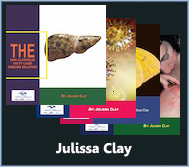Gout is typically treated using a combination of medications to manage acute attacks, prevent recurrent attacks, and lower uric acid levels in the blood. Here are the common treatments for gout:
- Medications for acute attacks:
- Nonsteroidal anti-inflammatory drugs (NSAIDs) such as ibuprofen, naproxen, or indomethacin can help reduce pain and inflammation during acute gout attacks.
- Colchicine, an anti-inflammatory medication, can also be used to relieve pain and reduce inflammation during acute attacks, particularly if NSAIDs are not tolerated or contraindicated.
- Corticosteroids may be prescribed orally (e.g., prednisone) or injected into the affected joint to provide rapid relief of pain and inflammation during acute attacks.
- Medications to lower uric acid levels:
- Urate-lowering drugs such as allopurinol, febuxostat, and probenecid are commonly used to lower uric acid levels in the blood and prevent recurrent gout attacks. These medications work by either reducing the production of uric acid or increasing its excretion by the kidneys.
- Pegloticase is a medication used in refractory cases of gout that converts uric acid into a soluble compound that can be easily excreted from the body.
- Prophylaxis during initiation of urate-lowering therapy:
- To prevent acute gout attacks that may occur when initiating urate-lowering therapy, medications such as colchicine or NSAIDs may be prescribed concurrently with urate-lowering drugs for a short period.
- Lifestyle modifications:
- Dietary changes, such as reducing consumption of purine-rich foods and alcohol, can help lower uric acid levels in the blood and prevent gout attacks.
- Maintaining a healthy weight, staying hydrated, and engaging in regular physical activity can also help prevent gout attacks and promote overall health.
- Management of comorbidities:
- Treating and managing underlying medical conditions such as hypertension, diabetes, and hyperlipidemia can help reduce the risk of gout and its complications.
- Joint aspiration and injection:
- In cases of severe pain or persistent inflammation, fluid may be withdrawn from the affected joint using a needle (joint aspiration) to relieve pressure and provide symptomatic relief. Corticosteroids or other medications may be injected into the joint to reduce inflammation and pain.
- Surgery:
- In rare cases of severe joint damage or persistent symptoms that do not respond to conservative treatments, surgical interventions such as joint debridement or joint replacement may be considered.
Treatment for gout is typically tailored to individual needs and may involve a combination of medications, lifestyle modifications, and management of underlying medical conditions. It’s important for individuals with gout to work closely with their healthcare provider to develop a comprehensive treatment plan that addresses their specific symptoms, risk factors, and goals. Regular monitoring and adjustments to treatment may be necessary to effectively manage gout and prevent recurrent attacks.





